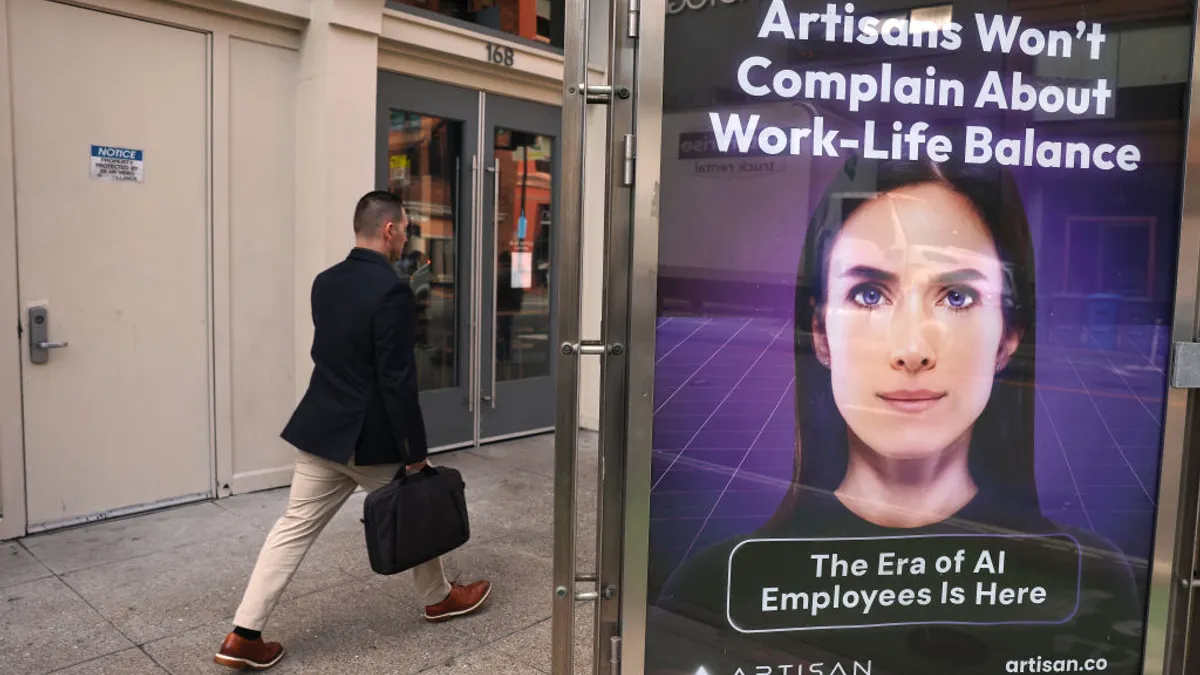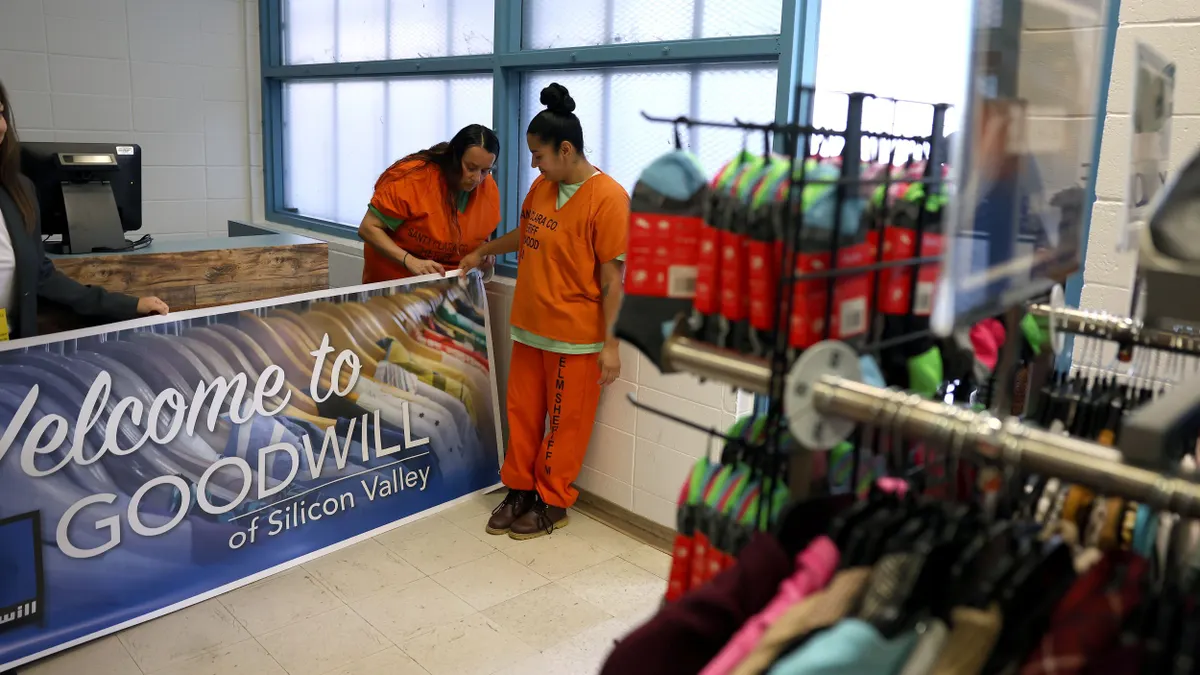Correction: A previous version of this article incorrectly stated that 30% of Georgetown’s learners are over the age of 30 and 25% both work and go to school full time. Those numbers reflect all college students, not just those at Georgetown.
For many American workers, technological advancement will mean the end of their jobs.
A recent report by the National Bureau of Economic Research estimates that hundreds of thousands of employees have been replaced by technology or robotics in the past 20 years. And an Oxford University study says 47% of American jobs could be at risk due to computerization over the next 20.
This "fourth industrial revolution" is already changing labor markets, according to a report by the World Economic Forum, The Future of Jobs. Developments in artificial intelligence, robotics, nanotech and more are changing the skills workers need to keep up in an ever-evolving employment landscape. They say “skills instability," or the rapid change in skill requirements, will affect 29% of workers in the U.S. by 2020, from front-line staffers through upper management.
For displaced workers, the need to participate in lifelong learning is a must to remain employable. But because this won't always appear as a certification or degree on a resume, this may mean a major shift in hiring practices.
Self-guided learning
A new paradigm for employers with difficulty filling open positions is a shift to skills-based hiring rather than the credential-based model of the past. Many applicants possess skills that aren’t reflected in their work history or educational experience. As more and more workers participate in self-guided learning, the skills-based model will become more relevant.
The State of American Jobs report revealed some insight from American workers:
-
87% believe continuous training is important or essential to their continued success;
-
54% believe training and developing new skills throughout their work life is needed to keep up with changes in the workplace and;
-
72% say “a lot” of the responsibility to assure they have the right skills and education falls on individual workers.
Bridging the skill gap — with the same tech creating it
To address these changes, the Markle Foundation recently announced The Rework America Task Force. Their mission: bring together industry leaders to modernize the U.S. labor market and create opportunities for job seekers, employees and businesses.
The task force builds on the success of the Foundation’s Skillful Initiative in Colorado. Rework America seeks to use the same technology that’s disrupting the labor market to enhance it. By redesigning the way employees are screened and hired, the program seeks to re-employ displaced workers and enhance employment for those who are underemployed.
Andi Rugg, executive director at Skillful, told HR Dive that their main objective is to arrive at a skills-based labor market, "where skills are the currency for success and employers are setting that demand in the marketplace."
"We work with individuals to articulate the skills they have, determine skills they need, and acquire those skills to become more employable," Rugg said.
The program works primarily in three ways:
- EmployerWork provides employers with tool kits to determine the actual skills (as opposed to credentialing) necessary for success. That allows them to work with larger talent pools. For example, one company was having trouble finding combustion engineers. “Talking with them, we found diesel mechanics held the exact skills they required: they had never considered broadening their search criteria," Rugg said.
- Career Coaching is another facet of Skillful’s efforts. Coaches work with job seekers identify skills and assist them in finding state workforce centers, community colleges and other training to enhance their resumes.
- Data Transparency is a large part of the program, as well. Working with LinkedIn Training Finder, Skillful helps seekers find the training they need. Moreover, transparency requires delineating the outcomes they can expect: what type of work they could find and salaries they can expect following completion.
Raw tech talent
The idea seems to be taking hold. Vivek Ravisankar, co-founder & CEO of HackerRank, started his company out of frustration with the status quo. He was an engineer at Amazon, spending hours interviewing tech candidates with impressive resumes who had difficulty passing baseline skill requirements. With 50 to 100 interviews per opening, he knew there had to be a better way.
“I knew from personal experience that there are so many people out there who are more than qualified for a job, but get overlooked because they didn’t go to a top school, don’t have a fancy degree or a high GPA or don’t have the connections to get their foot in the door," he said. "It was clear to me that hiring is broken — the skills gap is really a pipeline problem. Hiring should be based on skill, not pedigree.”
HackerRank is his solution: A skills assessment platform for software engineers that wants to change the way companies hire technical talent.
“The modern workforce requires a modern approach for assessing talent," Ravisankar said. "Last year there were nearly 18,000 people who learned to code through bootcamps. Bottom line: We are creating the future standard for developer skills to help power tech recruiting in an unbiased way.”
Lifelong learning
Lifelong learning is the new norm, according to Georgetown University. Their programs in business, marketing, IT, and STEM include an additional layer – a public service orientation for those who seek to work in government, public administration or the non-profit sector.
“The new model is everyone has to be a lifelong learner, because tech is placing pressure on everyone in ways that were unpredictable,” according to Andrew Hanson, senior analyst at Georgetown University’s Center on Education and the Workforce. Enrollment is reflective of his view: 30% percent of university learners are over the age of 30 and 25% both work and go to school full time.
Across the country, universities and community colleges are adding schools of continuing studies that are focused on training people in tech skills that are in high demand, Hanson said. Because the coursework is non-degree structured and non-credited, schools can ensure programs are aligned with the labor market.
“Technical schools originated the model of developing competency-based programming for those who are looking to enhance their skills or make a career change," Hanson adds. "These have an advantage of less bureaucracy, so they are able to be more flexible and innovative to respond to the needs of the community."
For those who have been left behind by technology, the market is quickly readjusting to get employees back on track. As the shift to skills-based hiring continues, more Americans will find another place in the workforce.
"Technology continues to displace workers in ways we cannot today imagine," Hanson believes. “The world is changing so rapidly and the pace of change is accelerating — there will always be new software we have to adapt to."
"We are a work-based society: technology will force us to continue thinking about finding and enhancing skill sets and careers valued by others in the economy," he said. "Lifelong learning is here to stay.”


















